 |
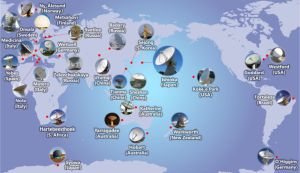
|
IVS Network Stations
(click the map above to enlarge) |
|
| GSI performs 24-hour international VLBI observations at the Tsukuba VLBI
station almost once a week in order to accurately measure Japan's location
on the earth, and contribute to Earth rotation measurements and plate motion
detections under the International VLBI Service (IVS). Other participating
VLBI stations of the observations are in Europe, U.S. and countries all
around the world. |
|
| International VLBI observations reveal global crustal deformations such
as plate motions, which were not able to be directly observed before, and
provide very accurate information of how the Earth behaves in its rotation,
where the radio stars are located on the celestial sphere, and other useful
things. The Tsukuba VLBI station contributes to the world as an IVS network
station. |
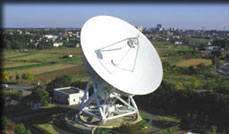 |
| 32-m antenna at the Tsukuba VLBI station |
|
 |
 |
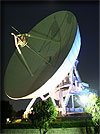 |
3.8-m Antenna of
Shintotsukawa Station
(Hokkaido) |
32-m Antenna of
Tsukuba Station
(Ibaraki) |
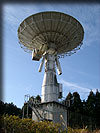 |
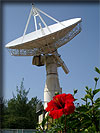 |
10-m Antenna of
Aira Station
(Kagoshima) |
10-m Antenna of
Chichijima Station
(Bonin Islands) |
|
GSI performs domestic VLBI observations at its owned 4 VLBI stations once a month in order to precisely define and monitor the Geodetic Reference System in Japan.
Japan is an long island nation stretching from south to north, east to west, and is located at the meeting place of four plates associated with active crustal deformation. Consequently earthquakes frequently occur, and Chichijima (Ogasawara Islands) and Kagoshima (Kyushu district), for example, have been getting closer to each other at a rate of approximately 7 cm/year. Under these circumstances long-baseline observations with VLBI are indispensable to maintain Japan's geodetic reference system which is the basis for all kinds of surveys in Japan.
GSI named its domestic VLBI observation series "JADE". We have been striving in our operation for the best results sparkling literally like a jade. |
|
 |
|
| GSI had been performing mobile VLBI observations between a 5-m mobile type
antenna moving to various parts of the country and the Kashima 26-m antenna
located at CRL (now:NICT) in Kashima, Ibaraki. The 5-m antenna had ever
moved to Miyazaki, Shintotsukawa, Mizusawa, Sagara, and Chichijima for
the mobile observations. In Chichijima, carrying it out several times in
different years, we made the world's first-ever detection of Philipine
Sea Plate motion velocity. |
|
And in Shintotsukawa and Kainan, the observation results were used to calculate new longitude and latitude values for shifting the national reference to the global common geodetic reference system upon the amendment of the Survey Act in 2002.
We also carried out Japan-Korea joint observations between a 3.8-m mobile antenna and the Kashima 26-m antenna in 1995. For this project we moved our mobile VLBI system including the 3.8-m mobile antenna from Tsukuba onto the ground of the National Geographic Informaion Institue (NGII) in Suwon, Korea. |